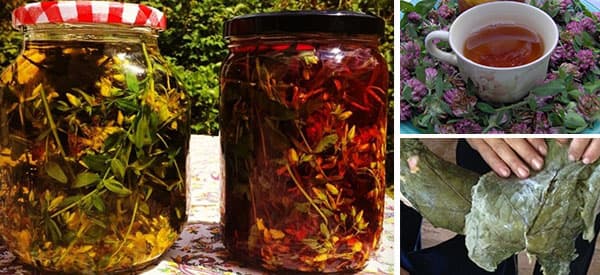
The Amish Herbal Remedies You Should Know
The Amish are highly pious and private people with ages-old ties to their agrarian culture. Although they do use modern medicine, they have a strong predilection for natural remedies. Being accomplished farmers, their gardens often include herbs that have culinary and medicinal uses: you’ll often find valerian, echinacea, and licorice mixed with wild mint, thyme, and oregano. These alternative therapies have yielded such positive results that Amish natural cures are frequently in demand outside the community. In this article, we’ll take a closer look at the Amish herbal remedies you should know about.
Burdock
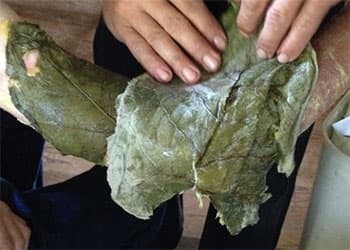
Burdock (Arctium) is a tall plant with heart-shaped leaves and burrs. The Amish believe that it is high in vitamins and minerals and use it in various preparations, including tinctures, teas, and ointments. One of its most popular uses is as a natural bandage: when someone in the community suffers a burn, a healer places a honey-based cream over the injuries and covers them with steamed burdock leaves to expedite healing.
Echinacea
The leaves, flowers, and roots of several echinacea (Echinacea purpurea) species are used to make medicine. The Great Plains Native American tribes used them as traditional herbal remedies and echinacea was even officially listed in the U.S. National Formulary until 1950.
Although traditional medicine has bypassed it in favor of antibiotics, echinacea is a staple in Amish households, largely due to its ability to fight upper respiratory infections like the common cold and flu. When a cold begins to develop, some people take echinacea hoping to prevent it from getting worse. Echinacea can also be taken after cold symptoms have begun to lessen their severity.
To make echinacea tea, pour eight ounces of boiling water over a mixture of roots, leaves, and flowers in a teacup. After steeping for up to 15 minutes, strain and serve. Add honey and/or ginger for extra flavor if desired.
To make a tincture, fill a mason jar 2/3 full of fresh plant material, cover it with 80 proof alcohol, and let it infuse in a cool, dark place for at least a month. Once it’s strained, it’s ready to be used.
⇒ The Common Wildflower The Amish Used for Stomach Upsets (Video)
St. John’s Wort
In ancient Greece, St. John’s wort (Hypericum perforatum) was used for a range of illnesses, including nervous disorders. Furthermore, St. John’s wort has antibacterial, antioxidant, and antiviral properties. Its anti-inflammatory properties make it useful for healing burns and wounds, so the Amish often use it to make a salve.
To make a topical application, place St. John’s wort flowers in a glass canning jar and fill it around 3/4 of the way. Fill the jar with carrier oil, such extra-virgin olive oil, or apricot kernel oil, cover the opening with cheesecloth, and infuse for two weeks. After straining, pour the oil into a clean jar and store in a cool place, applying to burns or eczema as needed.
Red Clover
Red clover (Trifolium pratense) is a perennial herb that grows wild throughout Europe and Asia, as well as in North America. It acts as a diuretic and expectorant (clears the lungs of mucus).In natural medicine, red clover is used to treat menopause symptoms, asthma, whooping cough, and even arthritis. The Amish frequently use it as a salve for skin conditions.
Red clover tea is made by steeping four grams of dried flowers in one cup of boiling water for five to ten minutes. Side effects have been reported in those who drink five cups a day or more, so it’s best to limit your daily intake to no more than three cups.
To make a salve, mix 1/4 cup each of red clover flowers, calendula flowers, and comfrey leaves in a glass jar and cover with 2/3 cup of olive oil. Set the oven to 250°, put the jar inside, and let it infuse for two hours. After cooling, strain the mixture into another glass jar, add a tablespoon of beeswax to the oil, and return to the oven until the wax is completely melted.
⇒ The 10 Medicinal Plants the Amish Grow in Their Gardens (Video)
Garlic
Garlic (Allium sativum) has both culinary and medicinal uses, which is why the Amish have been growing it in their gardens for several generations. Adding garlic to any dish adds intense flavor and nutrients. When used raw, it is most potent.
There are many health benefits to garlic, including fighting infections such as bacteria, fungus, parasites, and viruses. It regulates blood sugar and lowers blood pressure and cholesterol. Studies suggest that one to two cloves of raw garlic are the optimal amount to consume each day if you don’t want to risk side effects like heartburn or body odor. Add them to salads, stir fries, and other recipes.
Ginseng
American ginseng (Panax quinquefolius) is a gnarled, tan-colored root traditionally used by Native Americans to treat headaches, indigestion, and fever. Amish communities cultivate it to boost the immune system, fight respiratory illnesses, and improve both mental well-being and performance.
To make ginseng tea, pour approximately eight ounces of hot water over four to five grams of dried ginseng root. (Heat the water to around 208 °F (98 °C), which is the ideal temperature for extracting the beneficial ginsenosides). Steep for five to 10 minutes. Extract the roots and set aside (you can reuse them one or two times) before adding honey to the tea.
Valerian
Valerian (Valeriana officinalis) has been used to treat sleep disorders, especially insomnia, since the days of Ancient Greece and Rome. Modern uses include reduction of anxiety and stress, relief from menstrual cramps, and improved digestion, which is why the Amish frequently include it in their wellness tonics.
To make valerian root tea, bring one cup of water to a light simmer and pour it over a valerian root in a teacup. Cover the cup with a small plate and infuse for 30 minutes. Then strain and serve.
To make a tincture, put one ounce of dried valerian root in a 16-ounce jar and pour five ounces of 120-proof alcohol over it. Seal the jar, shake it well, and let the mixture steep for three to five weeks in a cool, dark place. When you’re ready to use the tincture, strain it through a cheesecloth into a clean jar. Take 1/2 to 1 teaspoon several items a day as needed.
Licorice Root
Licorice root (Glycyrrhiza glabra) has been used both as a food and health remedy for thousands of years. The extract is a demulcent, meaning it soothes and coats, as well as an expectorant that breaks up phlegm. Due to its anti-inflammatory properties, the Amish use licorice root as a remedy for digestive issues. Its powerful antioxidant and antimicrobial properties has also made it a treatment for ulcers, upper respiratory infections, and skin conditions like eczema.
To make licorice root tea, pour four ounces of boiling water over a teaspoon of dried licorice root, steep for five minutes, and then strain and drink. You should limit your intake of licorice root tea to half a cup per day to avoid side effects.
Conclusion
Although they will seek conventional medical care when necessary, the Amish sense of self-reliance motivates them to treat their illness with natural herbal and homemade remedies. For many health conditions and concerns, the herbs outlined in this article can deliver relief for acute symptoms and fortify one’s system for the future.
You may also like:
Amish Cough Syrup Recipe
The Long-Lasting Food That Amish Pioneers Turned To In Dark Times (Video)

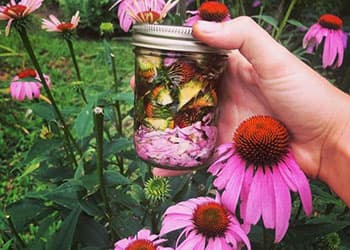
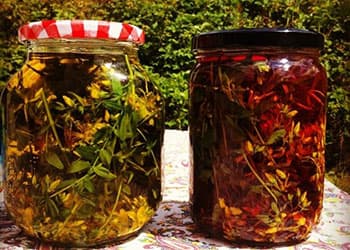
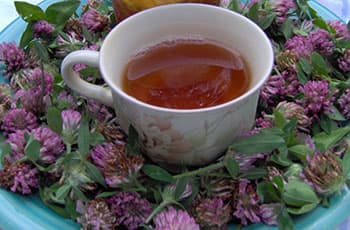
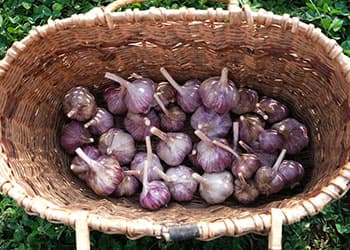
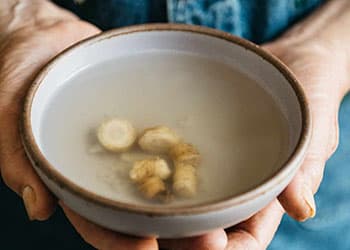
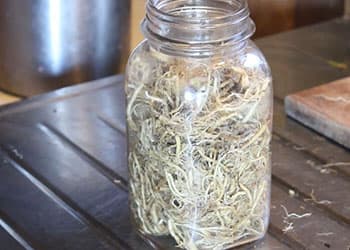
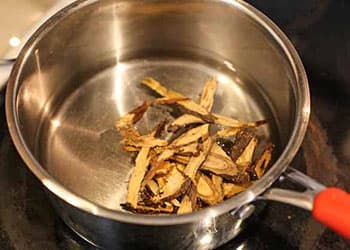
I love to learn all about home remedies.
Hi Ysneibys,
Thank you for your kind comment!
We are happy to hear our articles are helpful for you to learn more about medicinal herbs and home remedies!
Many blessings and good health!
PSA: Licorice Root should not be used by folks with high blood pressure.
Hello Kristy,
Thank you for your comment.
That’s right! People with high blood pressure, low potassium, edema, kidney or liver problems should avoid Licorice.
Many blessings and good health!
Unfortunately, licorice root is part of so many store bought “herbal” teas along with stevia because it sweetens them.
I don’t like the taste of either one!
Try buying just straight chamomile tea with only chamomile flowers!
It’s why I prefer to grow my own or buy my herbs singular from a trusted source.
I’ve been treating my self for a bacterial ulcer in the stomach and also bell cancer which has not spread and I’ve been taking nigella seed oil Black seed oil as a preventative for both my ulcer and my bowel cancer I’ve had a lot of stomach issues recent times nausea and pain so took a few days off I’m not sure if this is good for me or not any advice would be very much appreciated I respect natural medicines I do not believe that the doctors and surgery is the way to go healing myself through knowledge empowers my soul kind regards Julie
Sorry to hear. I just read that cancers are a bacteria!. Ivermectin is a cure?. Some information on rumble. Well worth looking into. Many blessings.
Hi Julie,
We’re deeply sorry to hear you are dealing with this and we hope you’ll get better soon.
Studies have indicated that adding probiotics to the standard antibiotic prescription may help eradicate H. pylori and speed up the recovery process for those with ulcers.
Honey, garlic, cranberry, licorice, oregano, rosemary, green tea and whole grains are also soothing for ulcers.
The scientific article below might be helpful for you:
https://www.ncbi.nlm.nih.gov/pmc/articles/PMC7187726/
However, a healthcare professional should be consulted about potential interactions or other possible complications before using any herbal remedies.
Many blessings and good health!
Check out the medicinal properties of frankincense oil and coconut oil
You also need 1000 MG Vitamin C morning and night to build immunity and make the infection they call a cancer go away.
Can we please stop calling conventional medicine “traditional”?? These herbal medicines are what’s traditional! A type of medicine only in use for 3 or 4 generations and has patents and inventors isn’t my idea of traditional, but the thousands of years of plant medicine is. I see this “error” in many articles, here and elsewhere, and I try to always call it out when I see it.
Hello AP,
Thank you so much for your valuable feedback. We promise we will put it to good use.
Many blessings and good health!